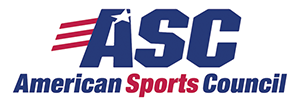ESPN Confuses Title IX Rhetoric And Factual Reporting
ESPNW’s coverage (read: advertising, media, traffic-driving blitz) of the fortieth anniversary of Title IX makes us question its commitment to journalistic integrity. Sure, ESPN has a handbook on “Editorial Guidelines for Standards & Practices,” but what’s the point if some of the network’s employees haven’t bothered to either read or adhere to it?
The latest article, “Five myths about Title IX” by Kate Fagan and Luke Cyphers is a flagrant example of ESPN’s biased, opinion-saturated compositions masquerading as serious journalism. It especially violates the following ESPN standards:
- “ESPN also must guard against bias and distortion, which can sometimes be the result of improper emphasis or omission. There may be errors of fairness, when we omit an important element of information, don’t fully report a story or offer an unbalanced view.”
- “FAIRNESS AND BALANCE: Always be mindful of and sometimes even state the opposing argument. It will often serve to buttress your conclusion or point out areas of your argument that need support. Whom you choose to interview can impact balance and perspective. Distinguish between commentary/opinion and reporting. The “other sides” of an issue can come from other points of view from other people.”
The authors sourced most of their information from the National Women’s Law Center (NWLC) and Women’s Sports Foundation (WSF), two of the loudest activist, lobbying groups that won’t quit until every school in this country enforces gender quotas to equalize the numbers of boys and girls playing sports (an absolutist goal that eliminates individuals’ freedom of choice and contradicts the spirit of Title IX). They have made football, basketball and males their top public enemies and fail to acknowledge the ever-mounting evidence that Title IX’s unintended consequences are seriously harming the integrity and purpose of athletics.
So why do Ms. Fagan and Mr. Cyphers use the perspectives listed above as facts when there is no pretending that the NWLC and WSF have specific, policy-driving agendas? It is extremely troublesome, not to mention 100 percent inaccurate, that they claim that a “myth” is “Title IX is controversial.” A simple online search would have demonstrated to them that not only does American Sports Council exist to reform Title IX because all of the disastrous cuts it has caused, but also that every day athletes, sports fans, commentators, etc. are furious with how the law has unraveled through burdensome, logic-denying regulations.
But that’s no foul compared to the next whopper of a “myth”: “Title IX forces schools to cut men’s sports.” Why is this false, according to the ESPN writers? Well, of course, the WSF, et al. say so! “But over the years, as Hogshead and others point out, administrators have found it more convenient to blame Title IX than football or men’s basketball for cuts to non-revenue men’s programs.” Yet again, these two revenue-making, wildly popular sports are blamed for the elimination of others. That these two sports receive many of their “perks” through money coming from volunteer booster club donations and activities is entirely ignored, but that’s likely because the booster association enterprise is the next frontier of attacks for Title IX activists.
The article also conveniently omits any statements by high schools, colleges and universities (even elementary schools) for why they have axed men’s teams and prevented popular men’s club sports like soccer, volleyball, and lacrosse from achieving varsity status or have demoted them to club status. If the authors had simply made an effort to fact check their sources and insert additional, opposing voices into the essay (male athletes immediately come to mind), they would have quickly seen that men’s cuts are no myth but a phenomenon that has occurred for decades.
Another one of their cooked up myths, “Opportunities are now equal” falls into the proportionality trap. According to the NWLC and WSF, athletic opportunities for men and women will never be equal unless the gap between them is closed. That entails achieving an equal ratio between the number of males and females in overall student populations with the number of male and female athletes. Well, because so many schools have female majorities in their overall populations but more male athletes, there is no way to bridge the gap unless male teams are cut and women’s teams are added. However, we can’t say this enough: Solely looking at numbers means that student interests are not accounted for, girls’ teams are unnecessarily added (meaning that girls are not asked whether they care to play the new sports) to bloat the figures, and boys who have proven a passionate interest in sports by participating are sacrificed. This is a no-win and absolutely no way to gauge how schools are offering opportunities.
It is shameful that ESPN and ESPNW can get away with opinion-based reporting, incomplete sourcing and coverage directed by activists on an issue as controversial and complicated as Title IX. It is to the detriment of ESPN’s audience that this sports outlet is too busy pleasing one subset of influencers to factually report on documented historical and recent developments in the industry it covers. So, ESPN readers beware: When you check out the sites’ Title IX stories, just know that you’re not getting anywhere near the full picture.
